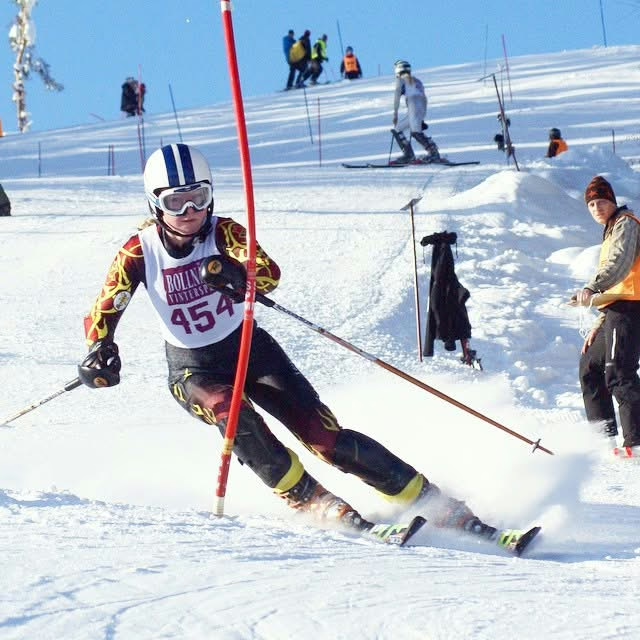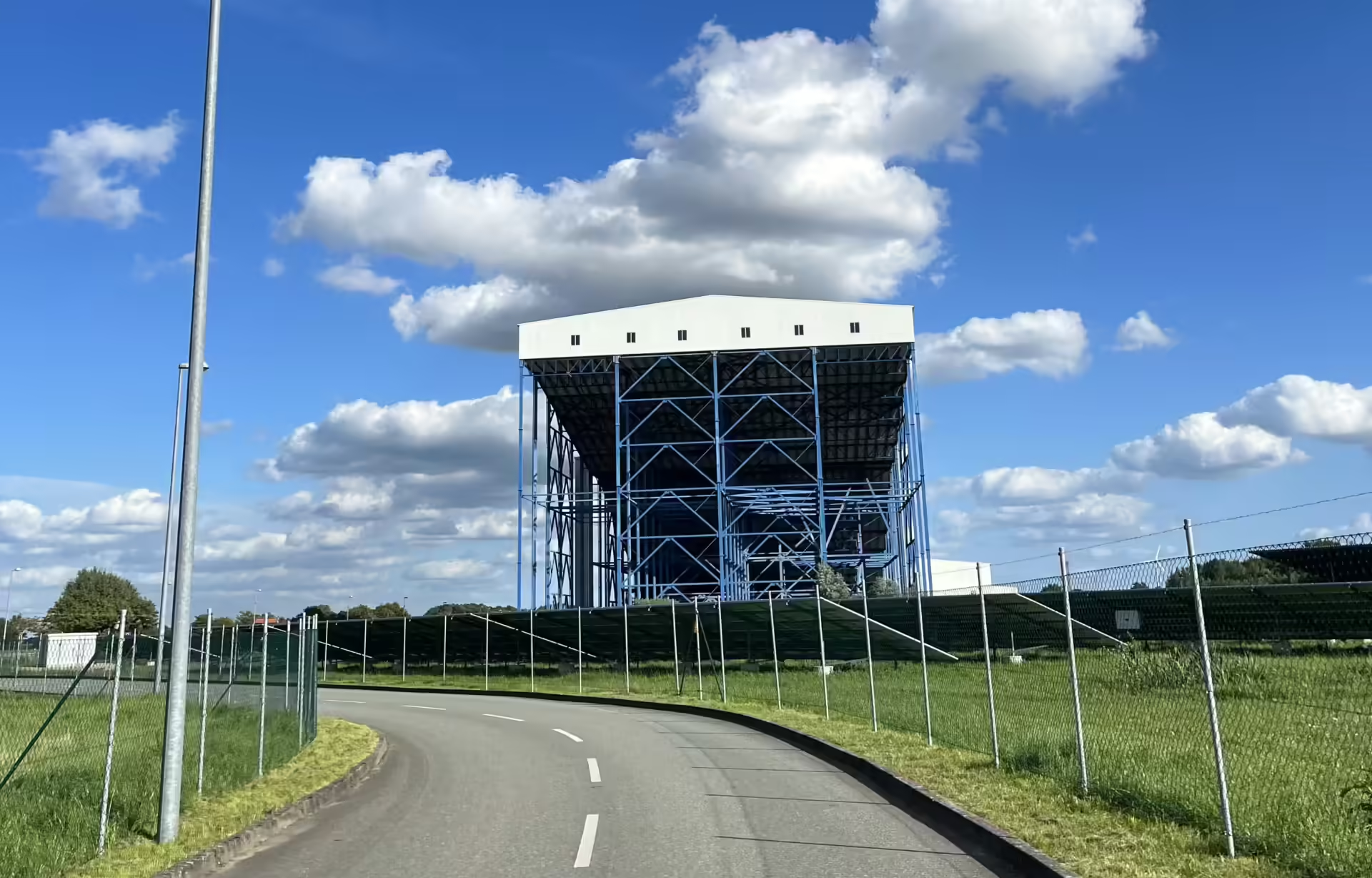
Approaching Alpincenter Hamburg-Wittenburg
Urban indoor ski slopes popping up everywhere nowadays. But do they serve their purpose? Here is an article about the pros and cons of indoor skiing.
As the climate changes, glaciers shrinks. And with them, the possibility for preseason training. Ambitious skiers now turn their head towards indoor arenas, mainly built for recreation, offering beginner styled slopes.
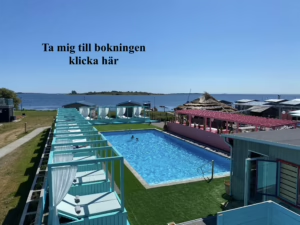
My first contact with an indoor ski slope was 15 years ago, when I worked as a race coach for Alpine Ski Pool, a private ski academy based in Sweden. Back then, we did preseason camps in Landgraaf/Holland.
At that time, a one of a kind all-inclusive indoor skiing resort. Offering 60 vertical meters. Now they are everywhere.
But are they any good? My experience was until today limited to this single facility. And my experience is as a coach alone.
One that is far more experienced than me in this area is my niece, Emelie Henning. She is a fresh out of the box retired world cup ski racer, and she has collected loads of hours, training in these giant refrigerators.
Let’s ask an expert.
The other week I met up with Emelie in Oslo at the Snø indoor ski arena. After her retirement this summer, Emelie was quickly picked up as a coach by one of the leading clubs in Stockholm, Lidingö. And they are frequent visitors to the Snø arena with their youngsters.
Emelie belongs to the first generation skiers partly brought up indoors, she is an expert and I thought it was a good idea to get some information out of her.
Emelie, you are now at the age of 25. I know you have been indoor skiing since you were a young teenager. How many ski days do you have indoors?
“Well it must be 100 days +” she answers me.
Ok, that’s more than a recreational skier gets outdoors in a 10 years time. Where did you go, and which one is the best in your opinion?
“I’ve been to Snow valley in Peer/Belgium, Alpincenter Wittenburg/Germany, Snow arena Druskininkai in Lithuania and Snø in Oslo/Norway. There are pros and cons with them all, but I would say that Wittenburg stands out in a good way and Peer in a bad way.”
Why’s that, why do you prefer Wittenburg?
“Firstly, they have a chairlift that moves quickly. Secondly, the slope itself is slightly more angled than Snø for example.
Third, it’s the facilities surrounding the slope. Everything is in line, easy walk from the hotel room, to the restaurant and further on to the indoor slope. And they offer all-inclusive. The food is not great, but you get your energy to focus on training.”
What about Peer? What’s the con there?
“I will send you a picture, then we can talk about it”
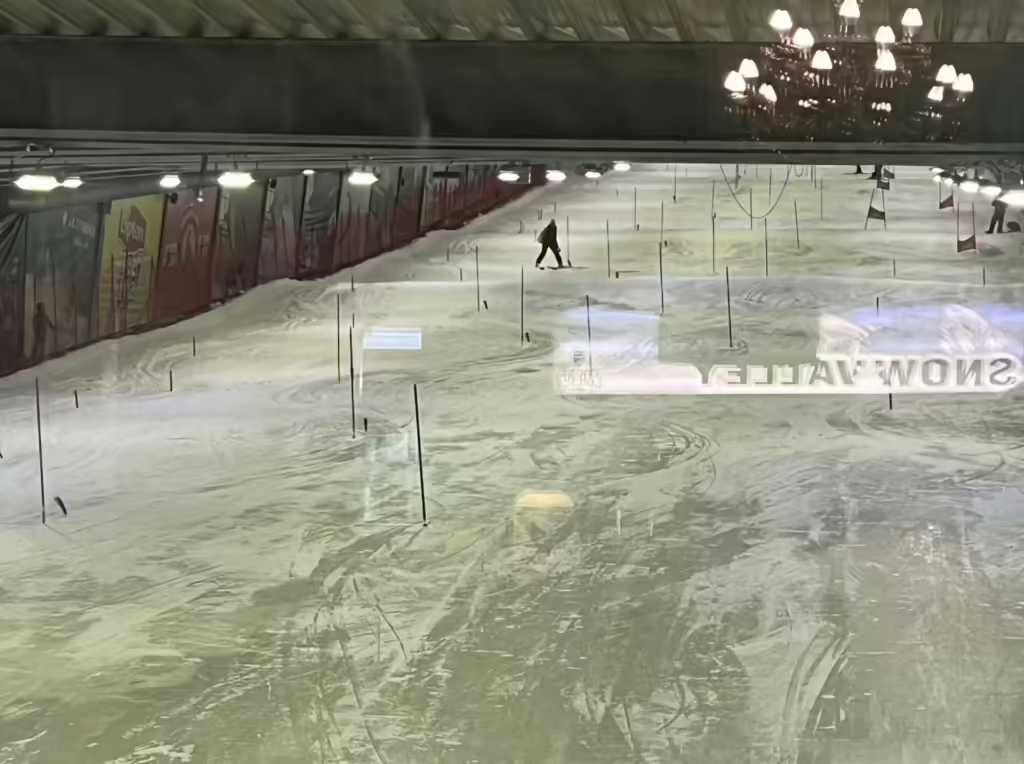
“The whole feeling, you’re in a warehouse or in a hockey barn. I’m a skier, not a skater. It doesn’t even have a normal lift, the only way up is via a belt conveyor.
It’s an elevated hockey barn, no hotel connected, no nothing.
I can’t recommend it, especially if you go there for recreation. The slope, however, is actually good constructed. It has some terrain, and it will make you a better skier if you can stand it”.
We are right now in the newest indoor arena in Europe, Snø in Oslo.
I can see the advantage of short distance from Stockholm. Only 6 hours drive instead of 11 hours to the nearest glacier, Juvasshytta. But are there any other advantages except from short distance, why shall I go indoors?
“First, you know what you get. The weather can be a hassle when you go to glaciers, indoors is always -4 Celsius and calm. Also, the slope stays the same during the whole session as its icy.
In two hours you get the same number of turns as in a whole day on a glacier. Meaning, in a three-day camp you get the same training as in a week in the alps. It’s effective.”
Isn’t it intense, and boring at the same time?
“O yes it’s intense, that’s why you can’t do this more than three days in a row, maximum four days. You can only do slalom, so you have to concentrate on that. Leaving your GS for the glacier sessions. But I won’t say it’s boring”
Sounds like It’s not only sunshine, skiing indoors?
” In a two-hour session, I need up to four pairs of skis, as the snow/ice wears out the edges in no time. That means there is a lot of afterwork. To sharpen four pairs of skis by hand takes time. During a three-day camp, there is no time to go outdoors. You won’t see the sun.
“Ski-Skifix-Eat-Ski-Skifix-Eat-Sleep-Repeat”.
Not only your equipment get torn, it hurts your body as well.
The hard basis affects your body. Your back hurts, and you get beaten by the gates without rest.
After a three-day session, you are bruised all over. On top of that, it affects your mental health eventually, no sun, high monotone sound from skiers punching gates echoes in the hall all the time “
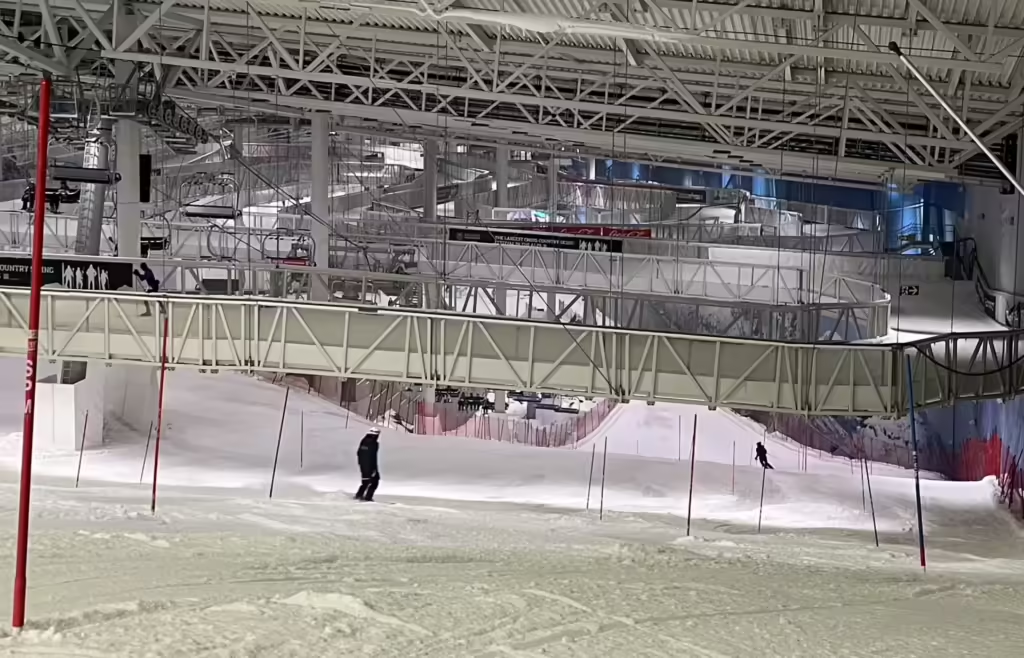
In my ears, it sounds crazy.
That behavior can kill your ski spirit. Is it necessary to go indoors to reach the top of the ski world?
“I don’t think so, but it’s effective as a training method. It’s cheaper than traveling to the alps, for example.”
Let’s turn that question around, Can you be a top skier just by training indoors?
“Well, if you aim for slalom only, I would say yes.
It’s very effective, and these indoor facilities are all over the world now.
I will not be surprised if we will see some indoor schooled slalom racers from China or Egypt or something competing on a high level within 10 years from now. In England, for example, David Ryding started his training on dry slopes and invested countless hours indoors”
As an alternative to glaciers and indoors, some ski resorts preserve their last winter snow, covering it during summer. Preparing the slopes for early opening at the beginning of October. Isn’t that the way to go?
“Absolutely, that environment is more inspiring for sure. So much more fun being outdoors.
But the weather can be a hassle in late fall. Skiing in rain might kill your spirit more than skiing indoors.
And the snow quality of preserve is not like old wine. It does not get better over time, and weather changes can kill it over an hour.”
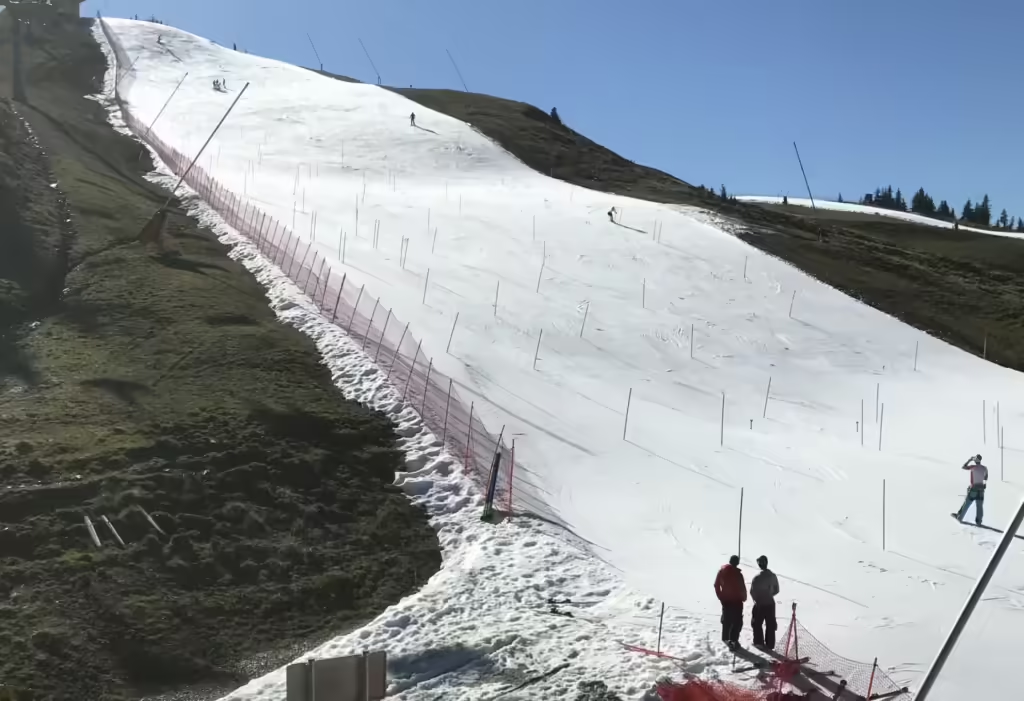
You are not longer a racer aiming for the world title, but a coach. What’s your thoughts of indoor skiing from that point of view?
“Coaching indoors is simple. Dressing rooms at the entrance, you don’t have to carry the gates for miles. You have good control over your athletes. And there are no tourists entering the course. On the con side, monotone sound from skiers slamming the gates into the ice, breaking the gates. There are no possibilities to overview a whole run as the roof is there and there is limited space for coaches over all.”
Talking to Emelie makes me realize that the ones using the indoor ski slopes are not the ones the investors have hoped for. All indoor ski arenas are firstly built for recreation. The heavy investment aiming for the masses. And they are not interested in repeat visits. This is not aqua land, it’s an expensive substitute for any local outdoor ski hill. But as a training facility, it surly serves a purpose for technical drills. Skiing is, after all, an outdoor sport.



